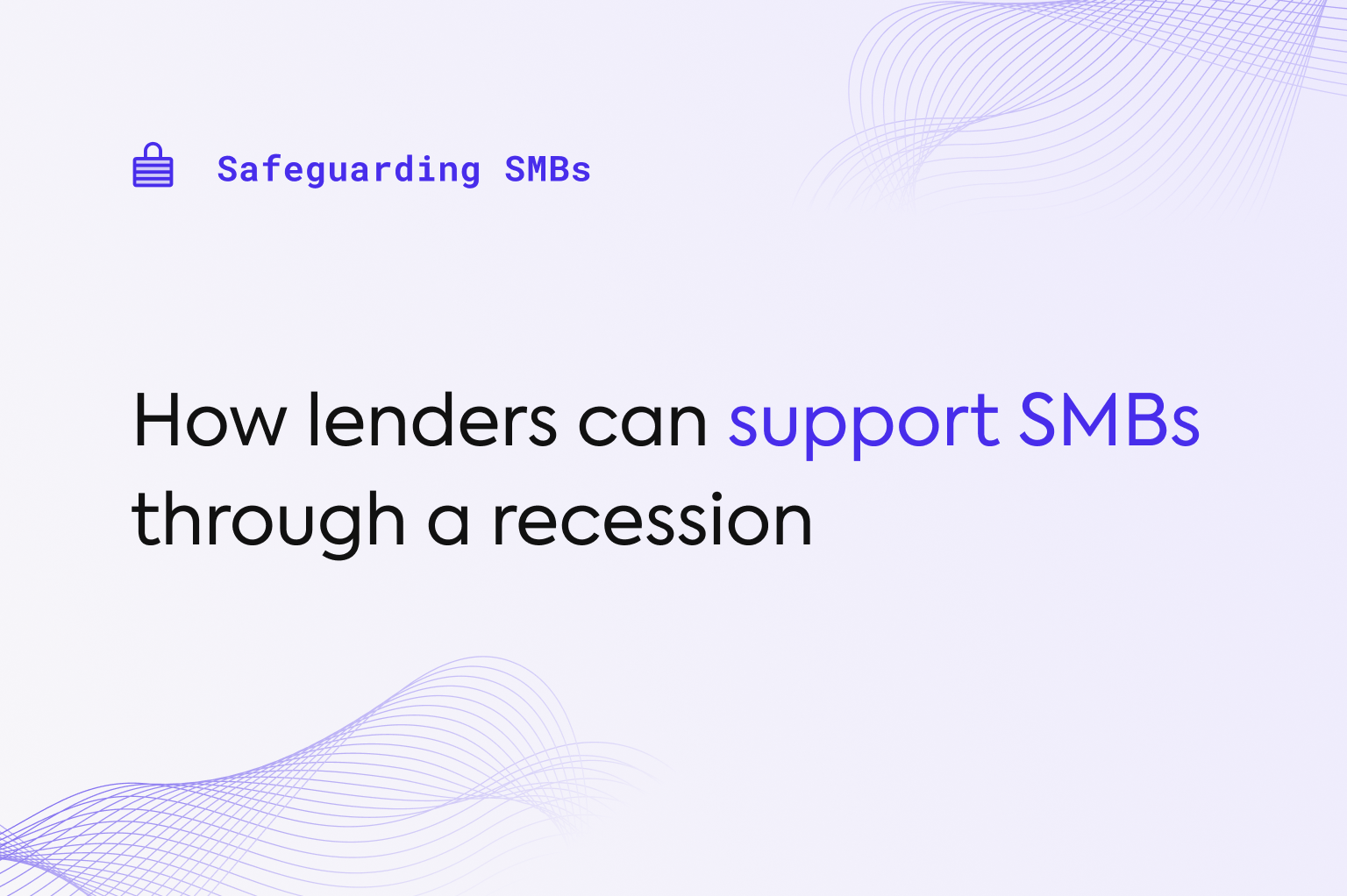
In uncertain times, leveraging data across different systems can help lenders improve the customer experience and protect their bottom line.
With the recent rise in inflation and other concerning economic indicators, the world is bracing for a possibly significant and lasting downturn—with some experts warning of a recession. Should their predictions come to pass, SMBs will be among the hardest hit. At the height of the global pandemic, for example, one-third of U.S small businesses closed their doors. Before that, the Great Recession closed down 1.8 million SMBs.
As a lender whose portfolio health is contingent on your SMB customers posting strong revenues, a recession can also pose a risk to your business. One way to mitigate that risk is to provide innovative services to SMBs when they need them. Here are three examples of what SMBs are looking for when it comes to credit:
- Fair and quick access to finance
- Reduced manual administration load
- Personalized services that cater to their specific needs
In each of the above cases, tapping into your customers’ tech stack is key. Integrations with their financial software allow you to pull detailed business data in real-time. In turn, you can accelerate time to funding, automate manual tasks, and proactively offer your customers credit products that meet them where they are. Here’s how:
1. Fair and quick access to finance 💰
Cash flow is usually the biggest concern for SMBs. Many small businesses only have cash reserves to sustain business operations for 15 days. During times of difficulty, such as the current inflation crisis (41% of SMBs have reported experiencing inflationary pressure), they may have even less. Meanwhile, processing a traditional loan can take weeks—too long to save a business operating on depleted reserves.
Part of the reason for this delay is the prevalence of antiquated underwriting processes.
The data underwriters need must first be standardized and categorized before they can even begin to review it, and most are collecting and normalizing that data manually.
By tapping into your customers’ accounting, eCommerce, or payment platforms, you give your underwriters access to the information they need, including data from income statements, tax returns, sales orders, and more. This allows them to instantly pull together a detailed view of a business’s creditworthiness, streamlining the path to loan approval and funding.
Integrations not only give underwriters access to the data they need; they instantly pull real-time data so you know how your customer’s business is performing moment by moment.
This makes for quicker, more confident decisioning and speeds up time to funding, which can make all the difference during a recession, when an SMB might be days away from shutting down.
2. Less financial administration 🔽
The average SMB loses 10 hours per week to administrative tasks, and the loan application process is no exception to this time drain.
Some lenders require multiple financial statements, profit and loss statements, and other financial documentation delivered via PDF. For SMBs, that translates to hours spent copying, scanning, and emailing files—and if there are any errors or omissions, you can expect to spend even more time playing document tennis.
By integrating with the systems your customers use to run their business, you gain instant, real-time access to the data you need to underwrite and process a loan (bank statements, shipping metrics, etc.) in a standardized format, eliminating the manual back and forth and potential for human error, and reducing the administrative burden on SMBs from hours or days to minutes.
3. Real-time monitoring 📊
SMBs are particularly sensitive to market fluctuations. Seasonality, supply chain issues, and changing economic trends all present challenges your customers must navigate.
Times of economic uncertainty and downturn only exacerbate these issues. During a recession, consumers tend to cut back on spending almost immediately, resulting in declining revenues for SMBs.
To make the best credit decisions possible and provide tailored support during turbulent times, lenders need to know how their customers’ businesses are doing in real-time. That means understanding how cash flow might have changed over the course of a week and tracking metrics like profit margins, working capital, revenue growth rate, and recurring revenue.
The key to real-time monitoring is integrations, which sync data at frequent, regular intervals to ensure all the information you’re working from is up-to-date.
This allows you to monitor how your portfolio is doing as it relates to the health of your customers’ businesses. Real-time data also puts you in a position to provide the tailored services your customers need to keep running smoothly. For example, by monitoring a business’s repayment ability and cash flow, you can offer top-up loans with favorable repayment terms during times of financial stress. This helps to build trust with your customers, earn their affinity, and create stickier relationships.
How Codat helps you integrate with the SMB tech stack
Codat makes it quicker and easier to build fintech products, like corporate cards, business dashboards, or SMB lending applications, that are integrated with the other systems small businesses use. Not only that, we offer an added layer of risk intelligence that surfaces actionable insights based on real-time data, identifies inconsistencies between a customer’s financial systems, and provides you with a set of pre-calculated sales metrics and financial ratios, so you can make more confident lending decisions.
Learn how Codat can bolster your loan profile against the threat of recession.